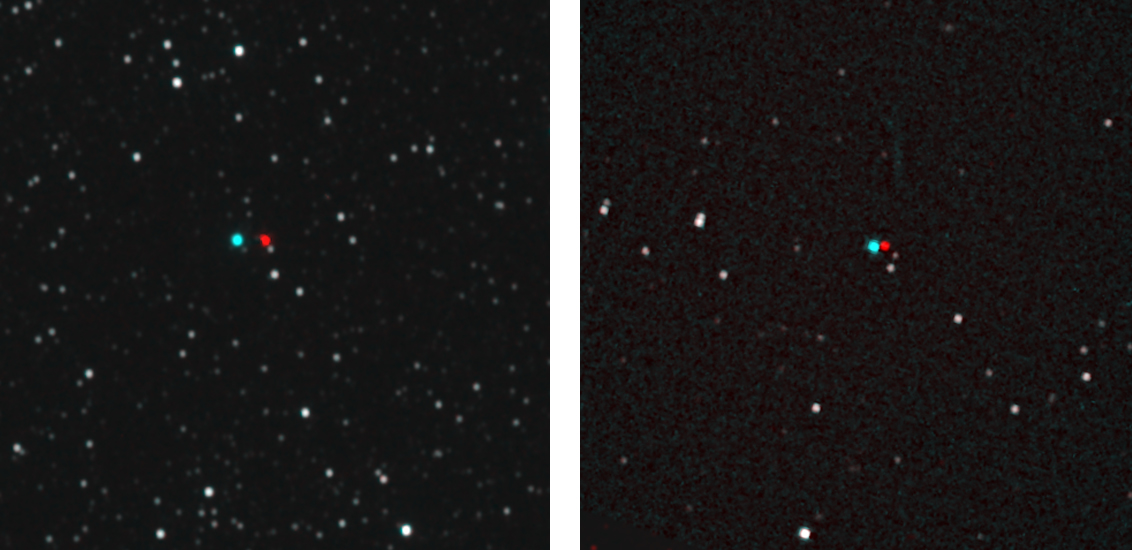

Hurtling through interstellar space 4.3 billion miles from home, NASA’s New Horizons spacecraft has traveled so far that it has a unique perspective of the stars.
On April 22nd and 23rd, the interplanetary space probe used its long-range telescopic camera to capture images of two stars, Proxima Centauri and Wolf 359. The images, which took 6.5 hours to beam back to earth, indicate that the stars appear to be located in different places in the sky than when we observe them from Earth.
“It’s fair to say that New Horizons is looking at an alien sky, unlike what we see from Earth,” said Alan Stern, New Horizons principal investigator from Southwest Research Institute in a NASA release. “And that has allowed us to do something that had never been accomplished before—to see the nearest stars visibly displaced on the sky from the positions we see them on Earth.”
The curious locational mismatch is a phenomenon called a parallax. Put simply, a parallax is when an object’s position changes based on the observer’s point of view. You can see a parallax here on Earth by placing one finger at arm’s length, closing one eye, and watching it bounce back and forth when you swap the eye you’re winking with. This also happens at massive distances out in space, as New Horizons has just demonstrated.
In 189 B.C.E., Greek astronomer Hipparchus used observations of a solar eclipse from two locations to measure the distance to the moon. He was measuring a “stellar parallax,” which today is essential in approximating the distances from the Earth to various stars. Instead of comparing solar eclipses, modern researchers observe a star’s movement against a background of vastly distant stars as Earth orbits around the sun—its different positions in orbit act like each of our different eyes viewing the outstretched finger, or in this case, a star—and use the parallax to calculate our distance from these stars. The Earth’s closest stellar neighbors are Proxima Centauri, between 4.24 and 4.37 light-years away, and Banard’s star, at 5.96 light-years.
But they’re not always easy to measure. As the Earth orbits around the Sun, the stars shift slightly, almost imperceptibly, because they are still hundreds of thousands of times farther away than the diameter of Earth’s orbit. These parallaxes can only be measured using precise instrumentation.
This time, however, the naked eye can easily see the parallax. “The New Horizons experiment provides the largest parallax baseline ever made—over 4 billion miles—and is the first demonstration of an easily observable stellar parallax,” said Tod Lauer, member of New Horizons science team in the release.
To graphically depict this relatively enormous parallax, Lauer teamed up with Brian May, astrophysicist and guitarist for the band Queen, to create the animated images that show the parallax. They superimposed an image of the stars taken from Earth, and another taken by New Horizons, fashioning what’s called a stereoscopic image. “These photographs of Proxima Centauri and Wolf 359—stars that are well-known to amateur astronomers and science fiction aficionados alike—employ the largest distance between viewpoints ever achieved in 180 years of stereoscopy!” May said in the release.
First launched in 2006, New Horizons explored Pluto and its moons in 2015, and continued with a close flyby of Kuiper Belt in 2019. Now, the probe continues to hurtle through deep space. It will eventually leave the solar system, joining the Voyager and Pioneer spacecrafts that have vaulted into the unknown.
